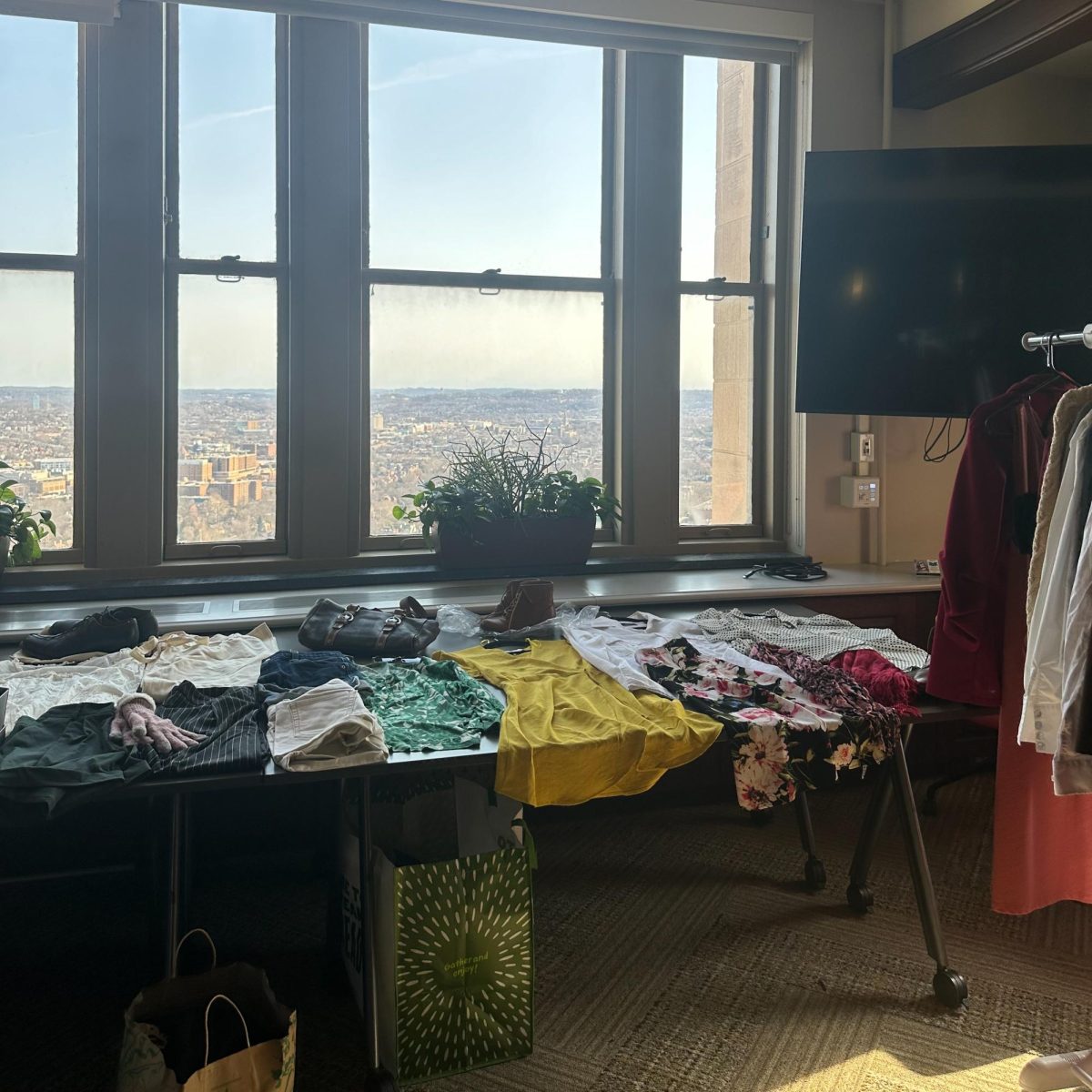Happily ever after is a joke
October 23, 2006
I think Cinderella was a wuss.
In Walt Disney’s cartoon version of Cinderella, Cinderella… I think Cinderella was a wuss.
In Walt Disney’s cartoon version of Cinderella, Cinderella presents herself to her stepmother and stepsisters after finishing an exhausting list of chores, wearing a dress carefully made with the aid of her animal friends, ready to attend the royal ball. It is at this point that nearly every young girl’s heart breaks as she watches Cinderella’s evil stepsisters tear at Cinderella’s attire, mostly constructed of their secondhand castoffs, sending Cinderella fleeing from the room and crying inconsolably.
What is she to do? How can she ever attend the ball now?
Cue Fairy Godmother and “happily ever after.”
But what were to happen if Cinderella had stood her ground in the face of adversity? If she had waited until her ugly stepsisters had finished their tantrums and calmly walked out of the room in her fashion statement of a mini-dress, saying:
“See you at the ball once I single-handedly become the life of the party through my astounding wit and intelligence. I’m calling a pumpkin cab. Don’t wait up.”
The Disney version of Cinderella took audiences by storm with its premiere on Feb. 15, 1950 by RKO Radio Pictures and has maintained a nearly cult following ever since. Produced by Walt Disney himself, and directed by Clyde Geronomi, Hamilton Luske and Wilfred Jackson, the fairy tale has always been considered an iconic and aesthetically pleasing story of rags to riches. While I agree that the cartoon is artistically idealist, I must argue that the moral of the story is a tad ethically dubious.
Marcia K. Lieberman wrote an essay titled “‘Some Day My Prince Will Come’: Female Acculturation through the Fairy Tale,” that outlines the negative aspects of fairy tales like Cinderella on little girls, looking at issues such as life as a beauty contest, suffering as glamorous, the portrayal of powerful women and marriage as the ultimate life reward.
The way that women in the tale are treated and, in turn, the way women treat their situations have clear implications to young girls about what behavior is rewarded in life and that which is not.
The importance of beauty is ever-pervasive in Cinderella and is clearly reflected in society. Immediately in the film, the beautiful, tragic Cinderella is juxtaposed with her ugly, privileged stepsisters. Cinderella draws an abundance of cute wildlife into her bedroom with her dazzling voice, while the stepsisters screech out their horrible rendition. Regardless of the girls’ different social statuses, young girl viewers are already maligned against the stepsisters because beauty and grace are better than any other positive qualities, such as intelligence, that the ugly, awkward stepsisters may possess.
Young girls have very limited options in the tale to relate to, and are forced to align with either the pretty girl or the plain girl. Lieberman points out that this creates a veritable “beauty contest” of sorts, making each girl suspicious of the other. After all, Cinderella tells us that pretty girls always win, and ugly girls are vicious schemers.
As the tale continues, we find that even though Cinderella is beautiful, talented and competent, she does not make any attempt to improve or remove herself from her miserable situation. Unlike boys represented in fairy tales, who succeed by being bold and actively seeking out their reward, young female viewers are taught that girls are rewarded by being passive or even sacrificing something crucial.
The most extreme case of sacrifice is in The Little Mermaid, when Ariel allows her body to be ripped apart to become human, and gives up her voice, her very sense of empowerment, to be “part of his world.”
The powerful women in fairy tales are either non-human, like the Fairy Godmother, whom little girls are unable to relate to, or ugly and evil, like the stepmother. Girls want to be meek, because passivity is pretty.
Marriage is viewed as the ultimate reward in Cinderella, and also the event that ends the film. The audience is not privy to what happens after the carriage rides off into the sunset. Little girls do not know exactly what “happily ever after” is, because we are never shown what happens once the honeymoon is over and Cinderella gains 15 pounds. Is it possible that Prince Charming is abusive? We never find out because marriage is “The End.”
It is deeply puzzling to me that, even in this day and age, Disney films typically subscribe to the same norms. Young black girls have yet to even find a princess to whom they can relate, because there are no black princesses.
It is my hope that before I have a daughter, there will be a Disney film with a non-white female heroine who isn’t just looking for a man. Or, at least a powerful princess, such as in the case of the most unconventional fairy tale, Pretty Woman, when Edward asks:
“So what happens after he climbs up and rescues her?”
Vivian responds, “She rescues him right back.”
Toss that tiara and talk to Jessica. E-mail her at jrp32@pitt.edu, before you turn into a pumpkin.


